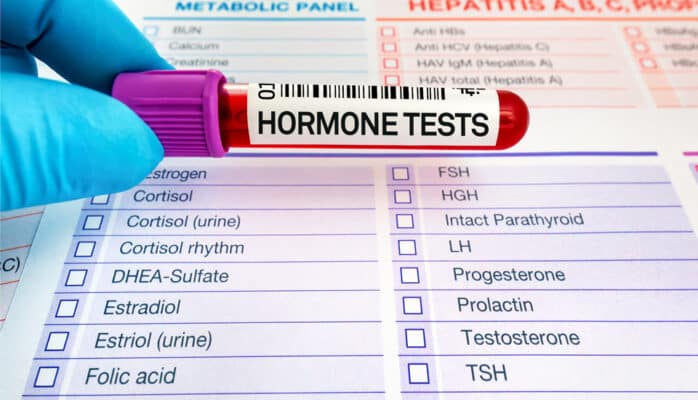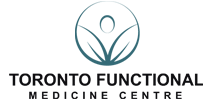
NAD IV Therapy – Adjunct Brain Optimization Support for Drug and Alcohol Detoxification
Quick Links:
NAD+ and Amino Acids IV Therapy Nootropics Support
NAD+ and amino acid IV therapies can be implemented as an adjunct treatment for drug and alcohol detoxification. NAd+ IV therapy treatments may reduce urges and improve memory, mood and vitality. This complementary nootropic program can contributes to the natural healing of the brain, and may help to overcome compulsions such as : Alcohol , Smoking tobacco, Marijuana, Narcotics (pain drugs), Cocaine, Heroine, Methadone, Stimulants and Antidepressants and other drugs related to ADHD, insomnia, anxiety
This patient-specific program is for those who are attending or have attended rehabilitation programs elsewhere, yet continue to struggle; patients with ongoing cravings for substances; or patients who have used an addictive substance once again and wish to stop.
What’s Going On in Your Brain?
Before we delve into our nootropics treatment approach, let’s look at how this affects your brain: the brain’s neuroreceptors take in signals from the “feel-good” brain chemicals, such as dopamine and serotonin. But addictive substances mimic the feel-good effect and damage the neuroreceptors that they’re stimulating. In turn, this jeopardizes the function of your own inherent feel-good neurotransmitter pathways, making it difficult for your brain to restore its normal balance. When you have intense substance compulsions, your nervous system relies on it; you continue using it to keep up those feel-good effects.
Naturally, your brain wasn’t designed for prolonged or heavy chemical exposure. During childhood and adolescence, your brain becomes delicately balanced – but substance abuse throws off that balance. And with that, the body isn’t always capable of fixing the damage that’s been done.
How Do Neurorecovery Treatments Work?
When patients use conventional methods like self-restraint and emotional support to fight substance abuse, we assume the brain will fully heal from the drugs and/or alcohol. Yes, the brain will heal some, but this healing is minor.
Also, going “cold turkey” can be a shock to the body. Reducing your substance use is painful, too. These methods frequently lead to a failure in stopping the substance abuse, while contributing to a lingering brain fog, sleeping issues, anxiety/depression and a craving for the substance.
When you use NAD+ and amino acids treatments to help control your final steps of substance compulsions, you directly address the negative chemical changes that the substances have caused in your brain.
How Does NAD+ and Amino Acids Help With Brain Recovery?
Firstly, you should know that amino acids – the natural building blocks of protein – help rebuild the brain’s damaged areas and satisfy cravings in a natural, non-habit forming way, rebuilding neurotransmitters. As a result, amino acid IV treatments may diminish your cravings for addictive substances.
NAD+ (nicotinamide adenine dinucleotide) is a coenzyme that helps transfer energy from the food we consume to our vital cell functions, especially to the brain. In fact, every cell in our body needs NAD+. This compound is needed to silence the genes that accelerate aging. NAD+ also participates in other functions from helping regulate our sleep-wake cycles to lowering our cholesterol and blood sugar. NAD+ may even contributes to:
● Replenishing our neurotransmitter supply
● Improving cognitive functioning
● Withdrawing from addictive substances
Additionally, Studies have shown that NAD+ can help you overcome anxiety, depression, chronic/acute stress, post-traumatic stress and other conditions, as it provides the brain with what it needs to return to proper functioning. In fact, this coenzyme might be effective in treating brain fog and cognitive impairment. Quite simply, NAD+ can be used to help re-tune our brain receptors to their original set point.
At Toronto Functional Medicine Centre our Naturopathic Doctor, Nurse Practitioner and Medical Doctor have partnered to offer patients integrative and functional medicine programs. Our NAD+ amino acids IV treatments help assist the body in restoring neuroreceptor functions to optimal levels, while helping to diminish substance cravings and improve memory, mood and energy.
At our clinic, we combine NAD+ amino acid IV neurorecovery treatments with oral support (i.e. medications or natural supplements), which help curb cravings and manage detox side effects. Once cravings have decreased, we will focus on the underlying health issues that may have initially contributed to the substance abuse.
Does IV NAD + Have A Lasting Effect?
Yes, as long as you refrain from alcohol and/or drug use. It’s uncommon for patients to repeat IV treatments, though they may return to our clinic for a refreshing IV dose. After finishing your IV treatments, our health care team may recommend oral medications and or nutraceutical supplements to help support brain function and reduce cravings.
Our NAD+ IV drips combined with amino acids are formulated based on Dr. William Hitt research, the first researcher to treat substance abuse by focusing on underlying chemical causes. Backed by evidence-based science, these IV treatments and or oral support will contribute to restoring the biochemical balance in the brain and promote neuroreceptor healing.
Are NAD Treatments Just a Health Trend?
Our IV therapy NAD program is evidence based. Ever since NAD+ amino acids research began in the 1980s, neurological aid via IV NAD drip treatments have been commended by health professionals for their ability to support the treatment of substance compulsion.
In fact, NAD Therapy has been shown to help reduce substance cravings in as little as one week. According to a study published in the Journal of Psychoactive Drugs, amino acid IVs used by patients with substance use disorders (SUD) revealed dramatic effects. For over seven days, patients underwent four hours of IV infusions once a day. Conclusions of the study revealed that, “the most significant finding occurred during the first week” in which IV therapies worked stronger than oral forms in improving emotional and cognitive symptoms.
Breakdown of Our Neurorecovery NAD+ Amino Acids IV Program
Specific IV formulas are administered according to different conditions to help curb cravings. Our neurorecovery program contains 5 steps:
Step 1: A 60 minutes consultation with our health care team
Step 2: Laboratory testing; testing ranges for each patient, but they may consist of liver, kidney markers, blood sugar, amino acid panel (plasma), inflammatory markers and/or functional medicine tests including the neuroendocrine profile.
Step 3: Implementing program-specific IV therapies which include:
● 10 or more NAD+ amino acid IV therapy treatments
● 10 or more IV multi-mineral/-vitamin and antioxidant cofactors cocktail formulas
(Take note: Treatments must be completed within 30 days; 10 consecutive days are recommended)
Step 4: Ongoing support from our health care providers (for each of the 10 days of IV treatments).
Step 5: A recommendation of medications and/or nutraceutical supplements to ensure successful results.
Please note:
● Several days of daily intravenous treatments are involved, which will be personally monitored by our clinic’s health care providers.
● The IV formula is a slow drip that can take several hours per day.
● As detox and healing increases, the IV drip may be decreased to fewer hours in the day.
How Do Neurorecovery IV Treatments Feel?
NAD+ amino acid IV drips are generally well tolerated, as they’re composed of simple amino enzymes and a natural cofactor. Some patients start to experience its beneficial effects on the first day of treatment. However, withdrawal symptoms may occur, including nausea, headaches, sweating, muscle spasms, constipation, diarrhea, fatigue, etc. But some patients feel these withdrawal symptoms are less severe when undergoing IV therapy. By the fourth day, you may notice that your cravings and anxiety have weakened. At this point, some patients began to experience a new positive outlook and better mental clarity and sleep. (NOTE: Since there are different NAD+ amino acid IV formulas, the formula chosen for you by out health team will depend on your health, substance use and medical history.)
To learn more about NAD+ amino acid neurorecovery therapies or other IV treatments offered at our clinic, call (416) 968-6961 or book your appointment online.
References:
Blum K, Oscar-Berman M, Stuller E, et al. Neurogenetics and Nutrigenomics of Neuro-Nutrient Therapy for Reward Deficiency Syndrome (RDS): Clinical Ramifications as a Function of Molecular Neurobiological Mechanisms. 2012;3(5):139-. doi:10.4172/2155-6105.1000139.
Blum, Kenneth; Braverman, Eric R; Holder, Jay M; Lubar, Joel F; Monastra, Vincent J; Miller, David & Comings, David E (November 2000). Reward Deficiency Syndrome: A Biogenetic Model for the Diagnosis and Treatment of Impulsive, Addictive, and Compulsive Behaviors. Journal of Psychoactive Drugs 32 (Supplement): i–iv, 1–112.
Blum K, Downs BW, Dushaj K, et al. THE BENEFITS OF CUSTOMIZED DNA DIRECTED NUTRITION TO BALANCE THE BRAIN REWARD CIRCUITRY AND REDUCE ADDICTIVE BEHAVIORS. Precision medicine. 2016;1(1):18-33.
Blum, Kenneth; Noble, Ernest; Peter J. Sheridan; Anne Montgomery; Terry Ritchie; Pudur Jagadeeswaran; Harou Nogami; Arthur H. Briggs; Jay B. Cohn (April 18, 1990). Allelic Association of Human Dopamine D2 Receptor Gene in Alcoholism. Journal of the American Medical Association 263 (15): 2055–60.
Brown, M.T.C., et al. Drug-driven AMPA receptor redistribution mimicked by selective dopamine neuron stimulation. PLoS One. 5:12: e15870, 2010.
Cleary, JP. A Consideration of Niacin as an Inhibitor of the Predatory Response. Journal of Orthomolecular Medicine Vol. 18, No. 1, 2003.
Miller M, Chen AL, Stokes SD, et al. Early Intervention of Intravenous KB220IV- Neuroadaptagen Amino-Acid Therapy (NAAT)TM Improves Behavioral Outcomes in a Residential Treatment Program: A Pilot Study. Journal of psychoactive drugs. 2012;44(5):398-409.
NAD+ metabolism in health and disease. Peter Belenky, Katrina L. Bogan, Charles Brenner. Trends Biochem Sci. 2007 Jan; 32(1): 12–19. Published online 2006 Dec 11. doi: 10.1016/j.tibs.2006.11.006
National Institute on Drug Abuse (http://www.drugabuse.gov). Updated March 2017.
S. Owen, M.D., P. Norris, M.Ed., LPC, DAPA, S. Broom Gibson, Ph.D., R. Mestayer, M.D. Neurotransmitter Restoration Therapy for the Treatment of Substance Abuse. Presentation at Society for Neuroscience annual meeting, Nov. 2008.
Riegel, A.C., and Kalivas, P.W. Neuroscience: Lack of inhibition leads to abuse. Nature 463: 743–744, 2010.
Shirayama Y, Chaki S. Neurochemistry of the Nucleus Accumbens and its Relevance to Depression and Antidepressant Action in Rodents. Current Neuropharmacology. 2006;4(4):277-291.
The NAD Deficiency Diseases. John P. Cleary, M.D.1. Journal of Orthomolecular Medicine Vol. 1, No. 3. 2937 Monroe Street Madison, WI 53711.
Valenzuela, C.F. Alcohol and Neurotransmitter Interactions. Alcohol Health & Research World Vol. 21, No. 2, 1997.
recent blog posts
9 Bite-Size Functional Medicine and IV Drip Tips for a Vibrant Summer in Toronto
Functional Medicine in Toronto compiled 9 wellness tips to help healthily enjoy your summer: 1.[...]
Reviving Energy Levels With Functional Medicine And IV Therapy In Toronto
Functional Medicine in Toronto identifies causes of energy imbalance and provides specific remedies to improve[...]
5 Lifestyle Tips To Reduce Estrogen Dominance With Functional Medicine From Toronto
Functional Medicine in Toronto shares some lifestyle tips to try: 1. Give your diet a[...]




